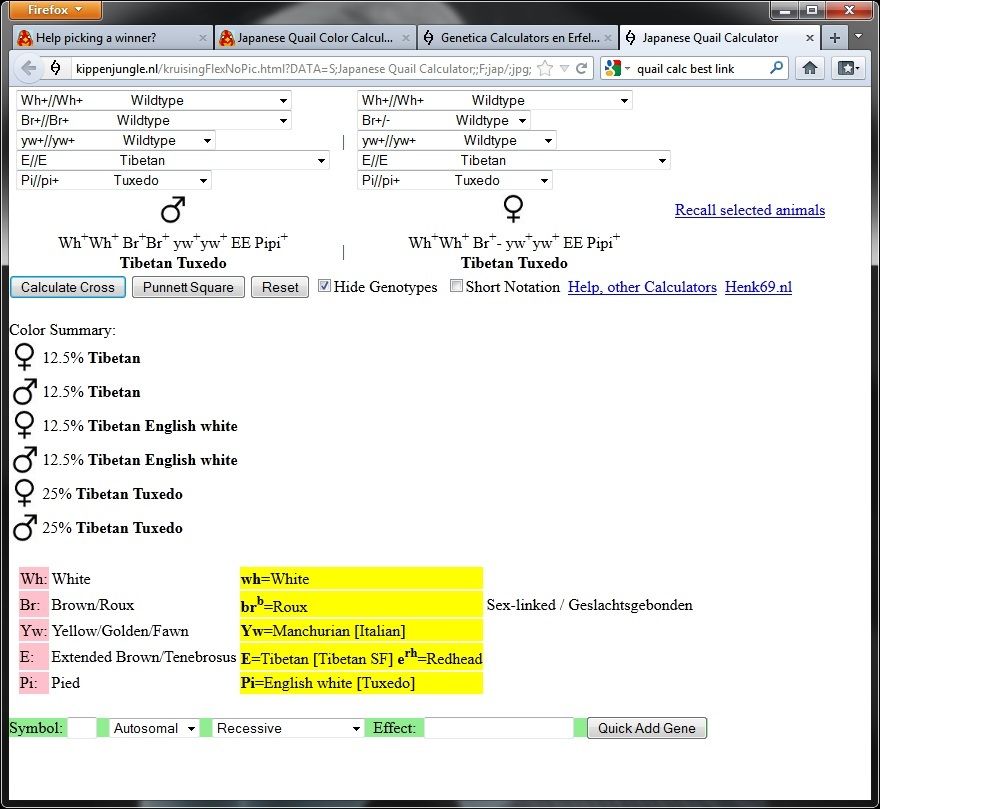I'd like some input on tibetan tuxedo coturnix. I have a good idea what i strive for pattern wise, but curious as to the ideal tux pattern? I had a good batch hatch that I'm growing out, there were some poor examples (extended white bib, or incomplete white), but I'm left with 4 possible males to choose from and can't reall decide which suits me best?
Bachelor #1
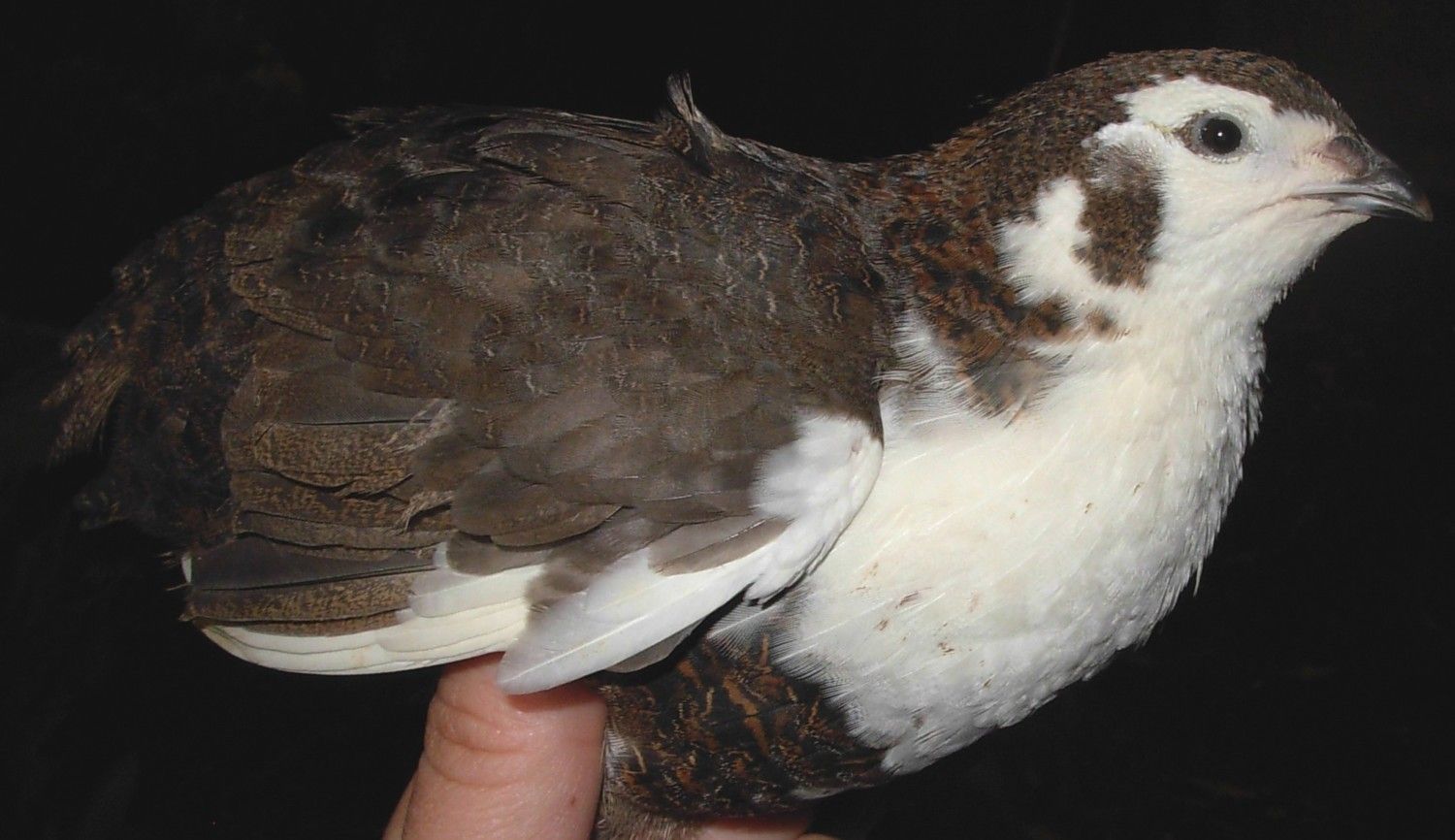
Bachelor #2
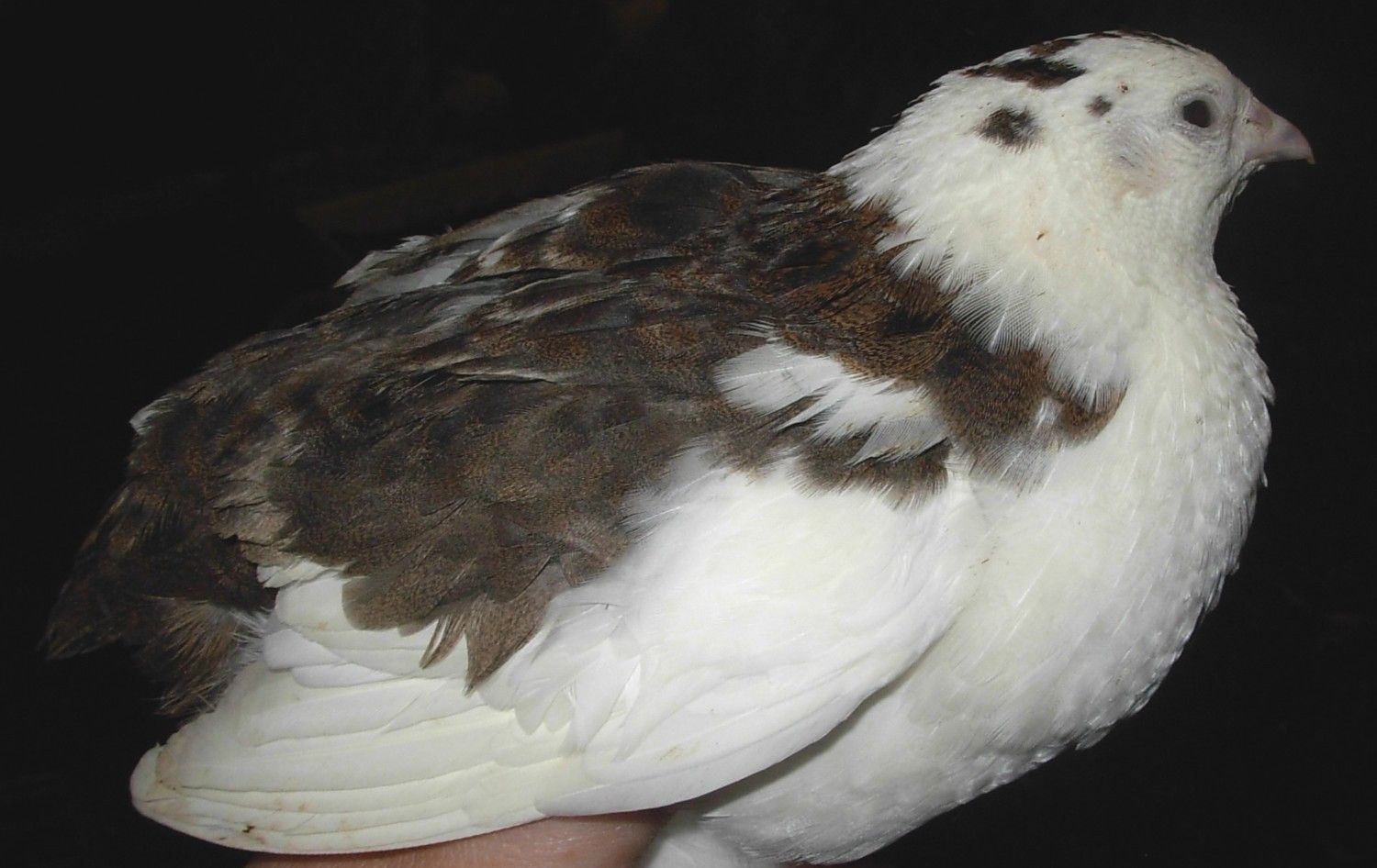
Bachelor #3
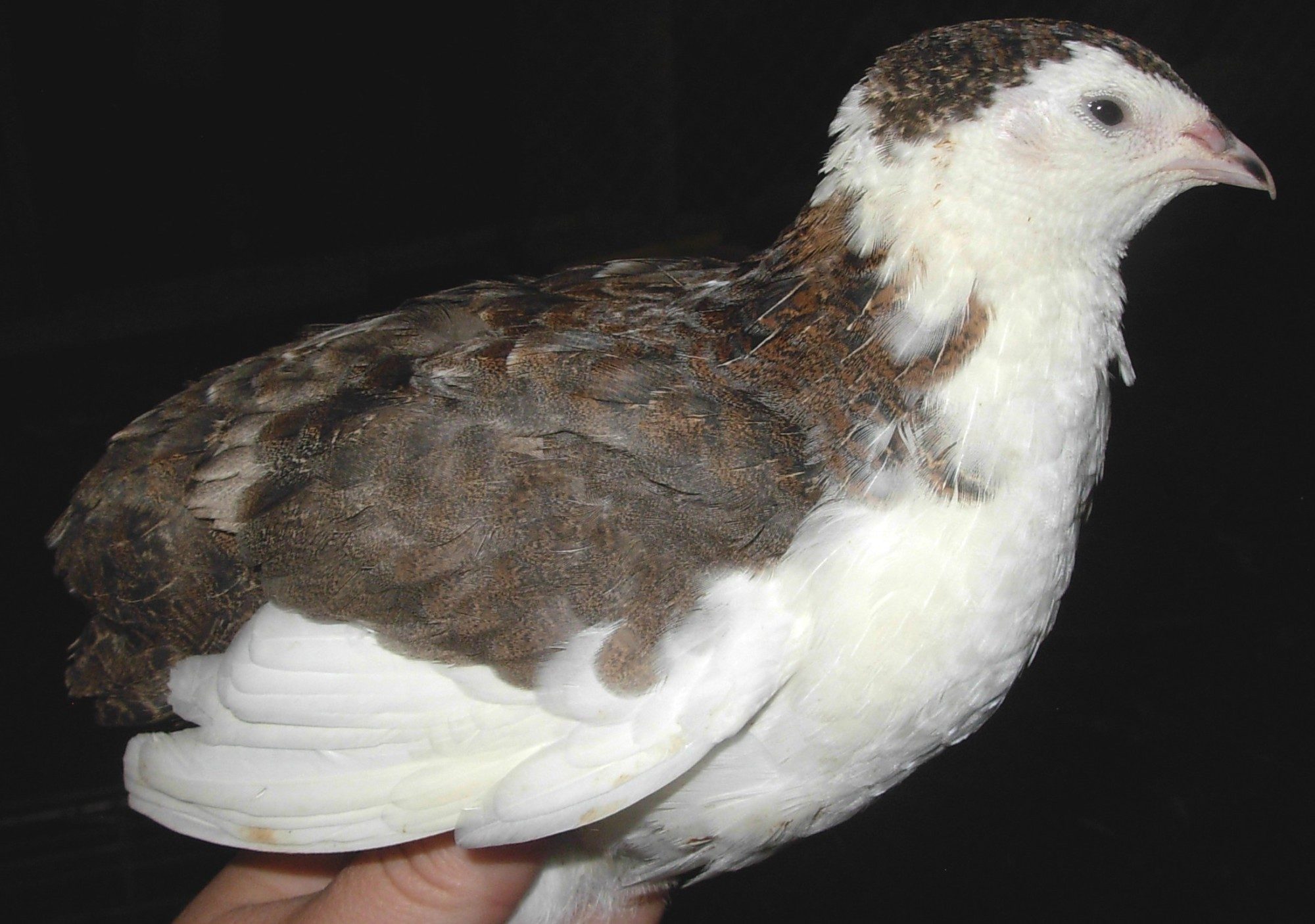
Bachelor #4

Each one of them have things i like and dont like. I like the patterning on the hens much better:
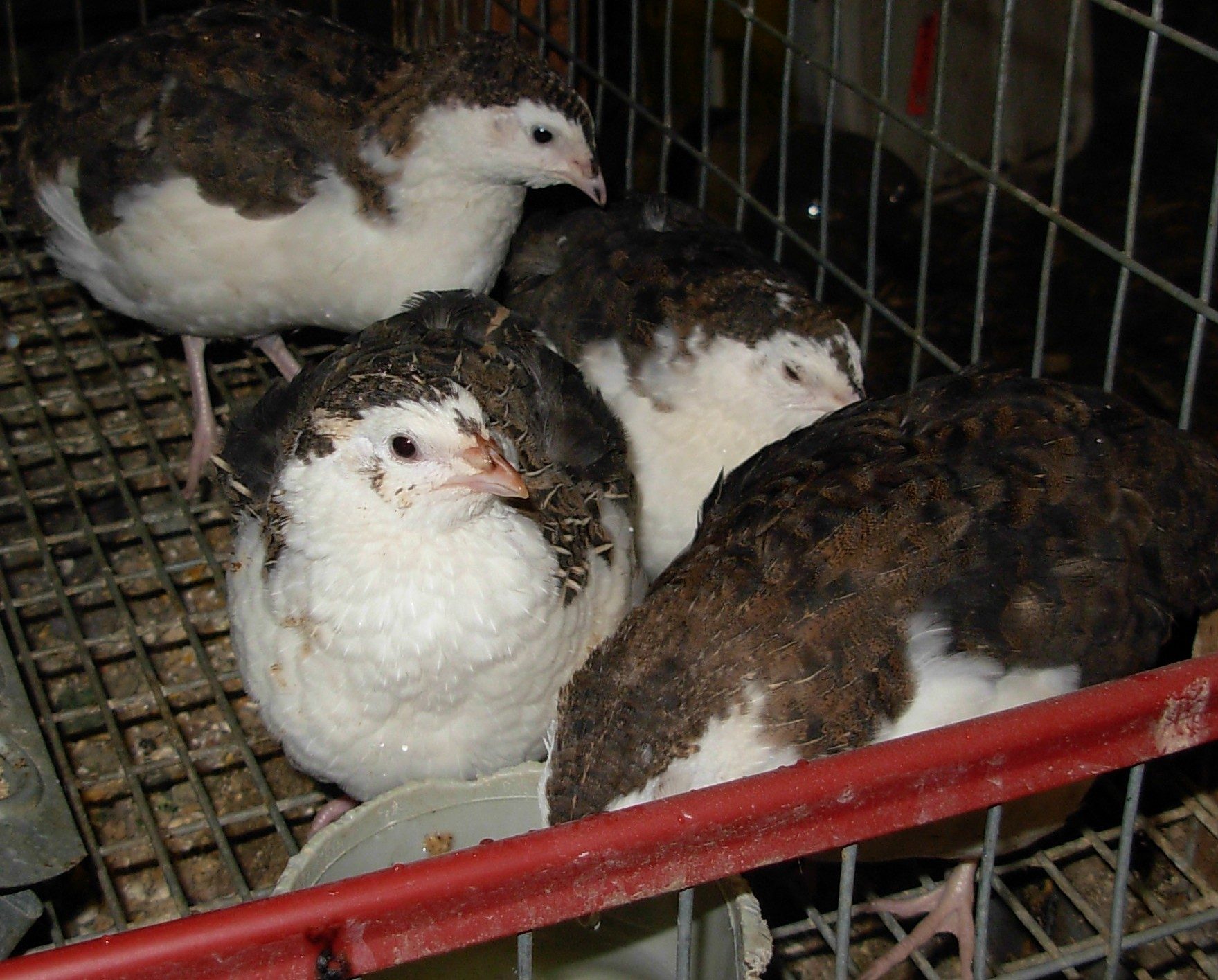
Bachelor #1

Bachelor #2

Bachelor #3

Bachelor #4

Each one of them have things i like and dont like. I like the patterning on the hens much better:






